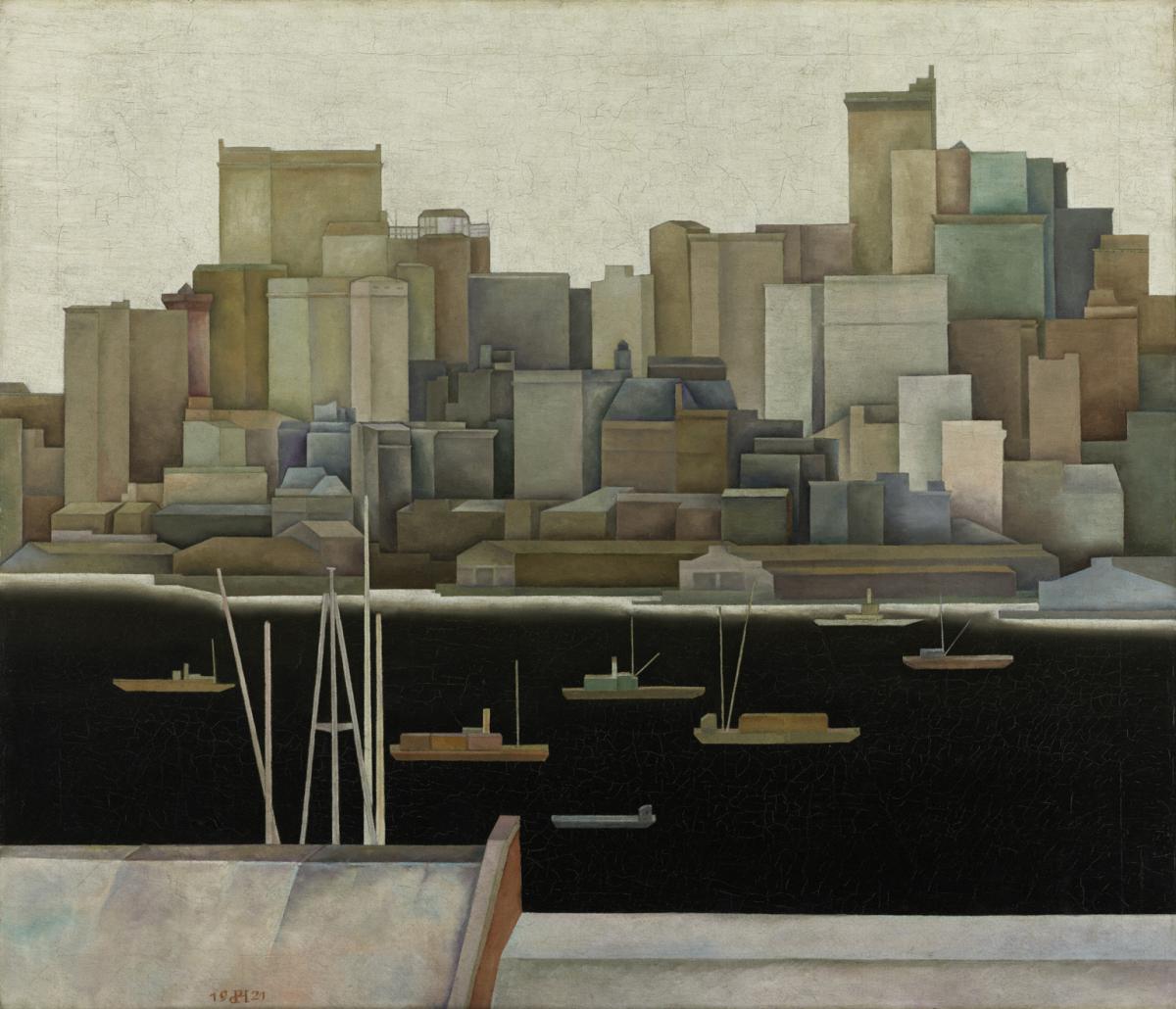New York, Lower Manhattan
Stefan Hirsch ( 1921 )

German-born painter Stefan Hirsch moved to New York in 1919. Upon arriving, he felt deceived: the artist expected green, open landscapes but found towering, congested cityscapes instead. In New York, Lower Manhattan, Hirsh expressed what he considered the negative effects of industrialization. He employs an unstimulating but unifying color scheme, and allows for no movement or life in the painting. Ships are moored in opaque black water, which is accented with an eerie white haze where it meets the shore. The overlapping, rigid rectangles create a dense, impenetrable skyline, the crisp lines of which stand out against the featureless sky.
Though associated with Precisionism in the New York art scene of the 1920s, Hirsch’s New York, Lower Manhattan, with its social commentary and emotional aspects, is more characteristic of German Expressionism.[1] Hirsch exhibits his understanding of line, depth, and perspective but uses it to express the severity he feels upon looking at Lower Manhattan from across the river.
Text by Rebecca Shipman as part of the Seeing U.S. Research Project
[1] Jeff Perrone, “Stefan Hirsch,” Artforum (January 1980), https://www.artforum.com/events/stefan-hirsch-229615, accessed December 10, 2023.
Stefan Hirsch achieved wide acclaim in the 1920s and 1930s for paintings of America’s urban landscape that show attention to detail, and combine clean, dry outlines with harmonious colors. His pictures typically depict the skyline of Lower Manhattan in a precisionist-influenced, hard-edged geometric style, as in this early example.
Unlike many of his contemporaries, Hirsch was not optimistic about the growing industrializations of America and his paintings were not necessarily celebrations of it. Hirsch once stated that “instead of finding the fresh, open view which I had ideally assumed to exist from reading Walt Whitman, Emerson, and Thoreau, I was confronted with the piles of steel and concrete that kept all the sun from the Wall Street area.” New York, Lower Manhattan is meant to convey the city as hostile and off-putting. He stated in a letter in 1960 that these peopleless, windowless buildings were “not altogether the accident of abstraction but also expressed [his] recoil from the monstrosity that industrial life had in megapolitania.”
Duncan Phillips, the first to acquire Hirsch’s work for a museum collection, recognized in New York, Lower Manhattan a “strange harmony” of subtly orchestrated color tones. He included the painting the following year in an exhibition of American artists. He wrote: “The canvas entitled New York is a symbolic decoration—a concept of a great city rearing its fabulous towers and its walls without windows about the menace of a black river under the purity of a pellucid sky. The grim battlements of Industry are all beautiful in a strange harmony of subtly orchestrated color. Behold our Civilization seen with a hint of prophecy.”